1. EGYPTIAN

A Bonded Stone Relief of an Egyptian Princess
Artist – Unknown
Date - circa 1270 BC
Ancient Egyptian art is characterized by its complex symbolism and conventional character. The paranormal characters of gods, royalty, and priests were symbolized by stiff and unnatural poses. Conversely, more naturalistic gesture represented ordinary people.
In clothing, the amount of fabric used to produce an outfit, and the complexity of jewelry grew with the status of the wearer. Also, Egyptians believed jewelry served as protection from supernatural forces.
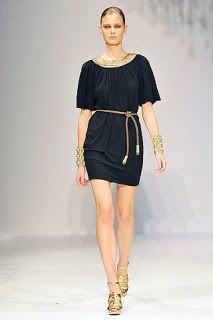
Egyptian Art Gold Accessories on Runway
Designer - Andrew Gn.
Material – unknown
Date – Spring 2009
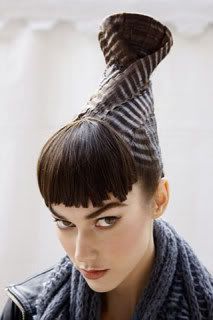
Nefertiti-chic Hair-do
Backstage at Christian Dior, Spring 2009 Show
Courtesy of Orlando Pita
2. GREEK-ROMAN

Augustus of Primaporta
The Copy of Roman Original
Artist - Unknown
Date - Circa 15 B.C.E.
Courtesy - Musei Vaticani, Rome, Italy
Greek and Roman art is known as Classical art, which the most important concepts are order and balance. They used a law of order and balance in everything included their apparel that characterized by the form of sculptural draperies. Both cultures’ garments consisted of layers of fabrics fastened by pins, or minimal sewing and the silhouettes were achieved by diverse fastening techniques.
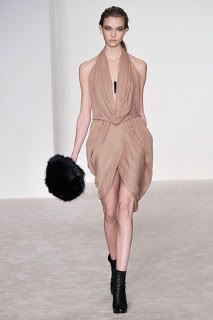
Derek Lam
Fall 2009 Collection
Material – unknown
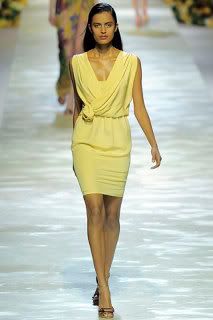
Blumarine
Spring 2009 Collection
Material – Unknown
3. BYZANTINE
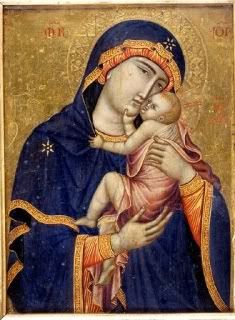
The Cambrai Madonna
Artist - St. Luke
Date - c. 1440
Metropolitan Museum of Art.
Byzantine art is a combination of Roman painting and Middle Eastern abstract decoration.
The most obvious feature of Byzantine art is the gold and metallic mosaics that were decorated churches and palace.
For Byzantine costume, the most important element was ornamentation. Most of apparels were embellished with ornamental embroideries at the cuffs, hems, and necklines. In addition, jewels were attached to every item.
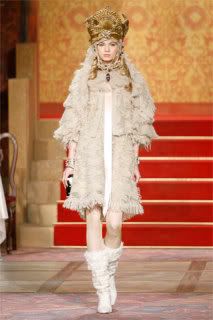
Byzantine Inspired Costume and Accessories
Chanel, Pre Fall 2009 Collection
Material – unknown
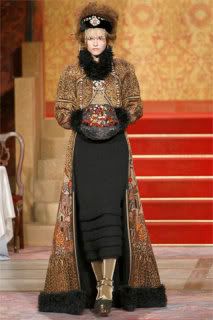
Byzantine Inspired Costume and Accessories
Chanel, Pre Fall 2009 Collection
Material – unknown
4. GOTHIC

Stained Glass Art of Notre Dame de Paris
Date - 1163
Paris, France
The Gothic or middle ages era was from the 12th century to the beginning of the Renaissance. During this period, architecture was the most representative form of art.
In clothing, sharp top spires, hard stone and fragile glass inspired Gothic silhouettes in forms of pointy shoes, tight-fitting, and dark tone velvety textiles.
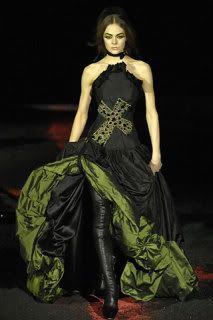
Gothic Inspired Gown
Alexander McQueen, Fall 2007 Collection
Material – unknown
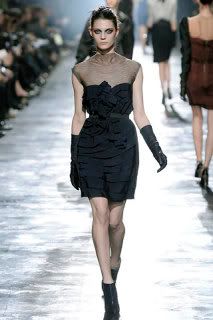
Lanvin, Fall 2008 Collection
Material – unknown
5. BAROQUE
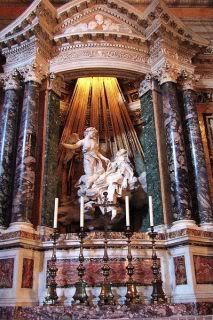
Ecstasy of St. Theresa
by Gianlorenzo Bernini. Cornaro chapel, Santa Maria Della Vittoria church in Rome.
Dated - 1652
Rome, Italy
Baroque style was a reflection of the political and religious struggles through intense effects of light and shadow, overstate compositions, poses, and dehumanizing proportions in architecture.
Fashion in Baroque era presented extravagant silhouettes, contrasting colors and patterns, and voluminous accessories. It also featured an overgrown element to distort the human figure: high waistlines, huge falling collars and cuffs, or skirt-wide breeches.
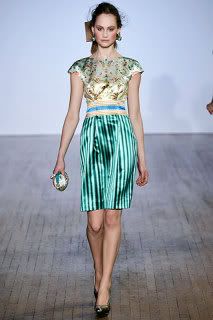
Baroque Art Inspired Contrasting Textile
Basso & Brooke, Fall 2009 Ready-to-Wear
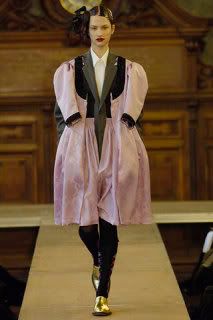
Comme Des Garcons' Wide Skirt
Fall 2009 Ready-to-Wear

An Oversized Collar Jacket
Designer - Yeohlee Teng
Fall 2007 Ready-to-Wear
6. ROCOCO
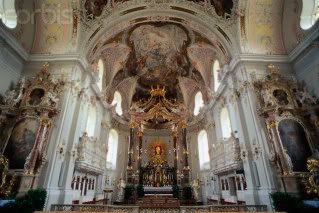
Interior of Wilten Basilica
Architecture - Unknown
Created - 1751-1756
Innsbruck, Austria
The Rococo art involved with luxury and lifestyle of the aristocracy.
According to module 10, a center stage was taken by interior design, furniture, gardening, and dressmaking.
Key looks for that era were revealingly low necklines for gowns, and using the most expensive textiles and embellishments. Moreover, towering and extremely sophisticated hairstyles and noticeable make up were fashionable.
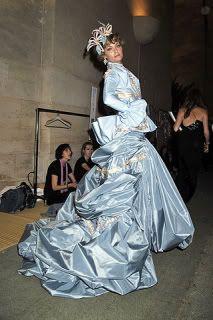
Rococo Inspired Gown
Christian Dior, Fall 2007 Couture
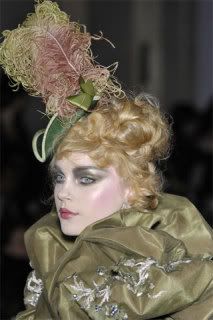
Rococo Inspired Hairstyle
Christian Dior, Fall 2007 Couture
Source - en.wikipedia.org/wiki/Art_of_ancient_Egypt
www.culture24.org.uk/art/sculpture/classical+sculpture/art26982
www.style.com

No comments:
Post a Comment